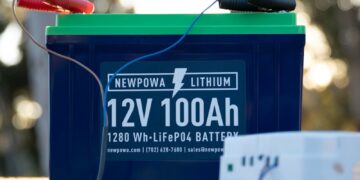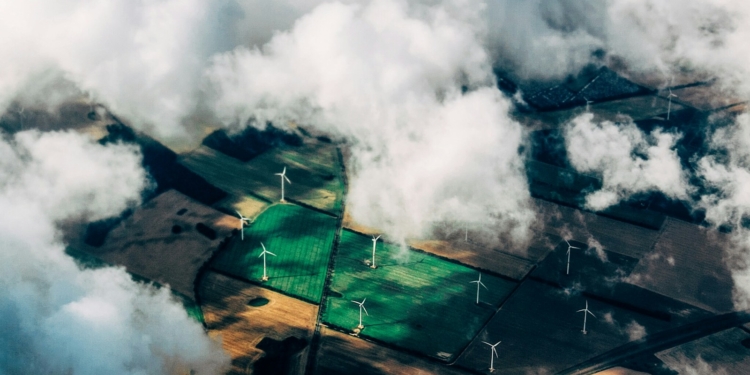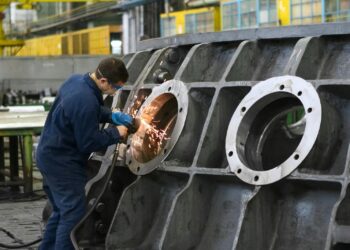The American energy sector is undergoing a powerful transformation. As 2025 kicks off, forecasts show the U.S. will introduce nearly 97 gigawatts (GW) of new electricity capacity to the grid—with the vast majority coming from solar and battery storage systems.
This rapid deployment, backed by updated data from S&P Global Market Intelligence, suggests over 59 GW of new solar and wind projects are set to go live alongside 31 GW of energy storage, marking a significant step toward a more resilient, clean-powered future.
Solar Power Steals the Spotlight
Solar energy continues to dominate clean energy investments across the country. With 49 GW of solar capacity expected to come online this year, that’s enough to power over 35 million American homes.
Texas, long a leader in energy innovation, is topping the charts with over 12 GW of new solar builds. Other hotspots include the MISO region (Midcontinent Independent System Operator) with 8 GW, and the PJM Interconnection zone, which plans 6+ GW in new solar capacity.
Several drivers are fueling this growth:
- Continued decline in solar equipment costs
- Strong federal and state-level tax credits
- Increasing corporate and community demand for clean energy
According to the Solar Energy Industries Association (SEIA), the U.S. solar industry surged by 51% in 2023. Momentum is expected to remain strong, with long-term projections showing a potential 17% increase in solar adoption by 2034.
Batteries Bolster the Grid
Battery storage—crucial to stabilizing clean power—will see explosive growth in 2025, with 31+ GW of new capacity slated to go online. These systems enable solar and wind energy to be stored and dispatched during peak demand or when weather conditions aren’t favorable.
California (through CAISO) and Texas (ERCOT) are again leading the charge. Texas plans to bring nearly 12 GW of battery storage online, while California aims for approximately 6 GW.
Wind Energy Holds Ground
While not expanding as aggressively as solar, wind power continues to make progress. Over 4 GW of new wind projects are on the books for 2025, including 2 GW in Texas alone. Offshore wind has faced delays from inflation and supply chain hurdles, but pioneering projects like Vineyard Wind are making headway off the East Coast.
Fossil Fuels: Transition, Not Elimination
Although the spotlight is on renewables, natural gas and coal remain part of the equation.
In 2025:
- 6.4 GW of new natural gas capacity is planned.
- 4.6 GW of gas retirements will occur, leading to a net gain of 1.8 GW.
- 6.2 GW of coal power is expected to be retired, continuing the long-term phase-out trend.
That said, recent federal policy shifts—like President Trump’s April 2025 directive naming coal a “critical mineral”—could create short-term friction in the clean energy push. However, most utilities remain cautious about investing in new coal infrastructure due to economic and ESG concerns.
Regional Outlook: Where the Growth Is Happening
Each grid operator is contributing uniquely to the U.S. clean energy buildout. Here’s how it breaks down:
- ERCOT (Texas): ~27 GW in new capacity, led by solar and batteries
- PJM (Mid-Atlantic/Midwest): 7 GW in new projects; 3 GW of fossil retirements
- CAISO (California): 10 GW in new capacity, with 6 GW from battery storage
- MISO (Midwest): 11 GW in capacity, mostly solar, plus major coal retirements
- ISO-NE (New England): 2 GW in solar + storage
- NYISO (New York): 1.4 GW in capacity; gas phase-outs underway
- SPP (Southwest): 6 GW mainly in solar and natural gas
- Non-ISO Areas (e.g., Southeast): 33 GW of new builds, including 17 GW solar and 11 GW storage
A Spotlight on Innovators: Pacifico Energy
As the clean energy transition accelerates, companies like Pacifico Energy are playing a central role. The firm specializes in Energy-as-a-Service (EaaS)—developing, owning, and operating renewable systems that support industrial users, data centers, municipalities, and landowners across the U.S.
Pacifico Energy’s approach to community-scale and offsite energy infrastructure positions it as a strategic partner for businesses seeking to reduce energy costs and meet ESG commitments. Its growing pipeline of solar, wind, and storage projects is helping unlock new revenue for landowners while supporting grid reliability.
What Comes Next?
Even amid political back-and-forth, the clean energy shift appears unstoppable. Market forces, technological advances, and demand for decarbonization are aligning to accelerate renewable adoption.
By the end of 2025, the U.S. will be closer than ever to a resilient, low-carbon energy economy—one that can power homes, businesses, and transportation, without sacrificing reliability or performance.
Stay tuned as companies like Pacifico Energy and others drive this historic transformation forward.



















